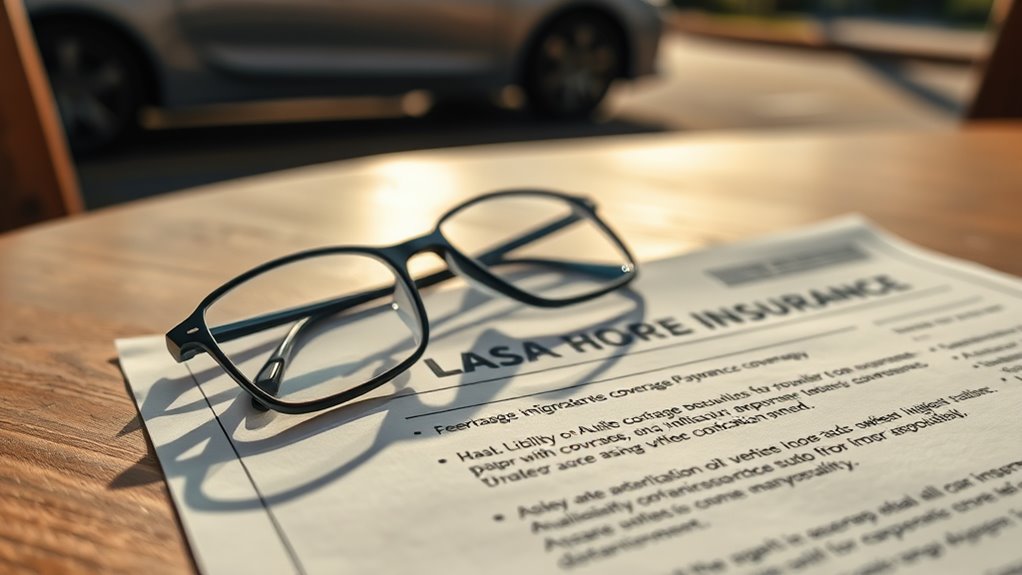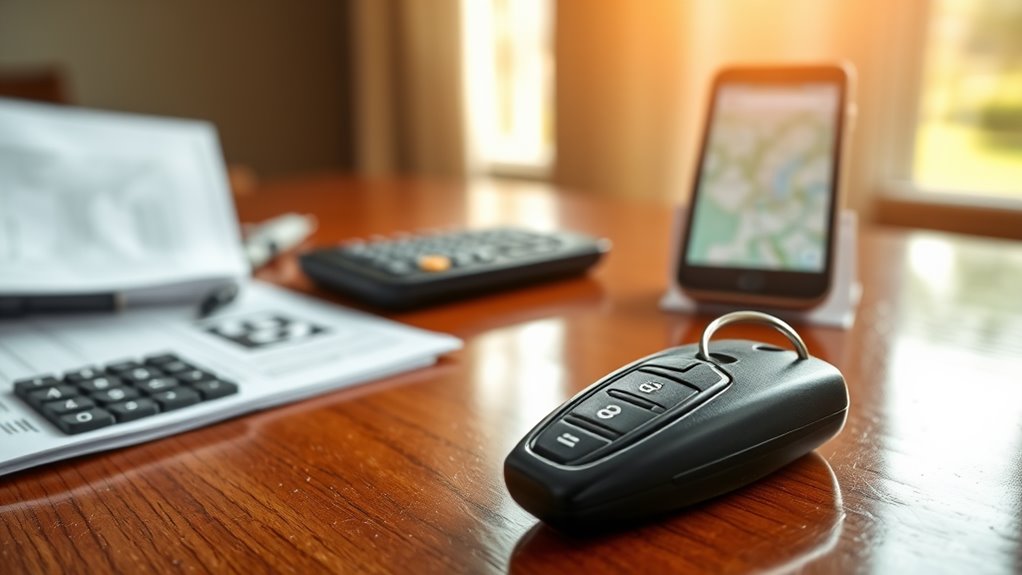Driving a car you don't own can be liberating, yet it comes with specific risks. Understanding non-owner auto coverage is essential to navigate these potential pitfalls effectively. It provides liability protection for injuries or damages you may cause, but it doesn't cover damage to the vehicle itself. To guarantee you're adequately protected, there are several key aspects to take into account. What additional coverage options might safeguard you against unexpected circumstances?
Key Takeaways
- Non-owner auto policies provide liability coverage for injuries or damages to others, but not for the vehicle being driven.
- These policies are beneficial for individuals who frequently rent cars or borrow vehicles from friends.
- Coverage meets state minimum requirements, ensuring legal compliance while driving non-owned vehicles.
- Be aware that non-owner policies may only offer secondary coverage, activating when the owner's insurance is insufficient.
- Consider adding UM/UIM protection to guard against uninsured or underinsured drivers in the event of an accident.
Understanding Liability Coverage in Non-Owner Policies

When you consider a non-owner auto policy, understanding liability coverage is essential, especially if you frequently drive vehicles that aren't yours. This coverage protects you against injuries or property damage you cause to others while driving. It meets state minimum requirements, ensuring you're legally compliant. However, it's crucial to highlight that this policy won't cover damages to the vehicle you're driving. If you often rent cars or borrow from friends, having liability coverage can save you from costly rental insurance fees. Additionally, if you're between vehicles, a non-owner policy helps maintain continuous coverage during changing periods. Always remember, proof of insurance might be necessary in your state, even if you don't own a car. Furthermore, this type of insurance offers lower premiums compared to standard car insurance, making it a cost-effective choice for many drivers. Additionally, many states require proof of insurance for drivers, which can be satisfied with a non-owner policy.
The Benefits of Uninsured/Underinsured Motorist Protection
Liability coverage serves as a foundation for non-owner auto policies, but the benefits of uninsured and underinsured motorist protection (UM/UIM) go even further in safeguarding your financial well-being.
With UM coverage, you're protected if you're in an accident with a driver who's no insurance, while UIM coverage kicks in when the at-fault driver's insurance falls short. This protection covers medical bills, vehicle damage, and even lost wages, ensuring you aren't left paying out of pocket.
Additionally, if you encounter a hit-and-run driver, UM coverage offers financial support. Given that approximately 13% of drivers are uninsured, having UM/UIM coverage isn't just wise; it's essential for maintaining stability in unpredictable circumstances.
Exploring Medical Payments and Personal Injury Protection Options
While maneuvering the complexities of non-owner auto coverage, understanding medical payments coverage and personal injury protection (PIP) options is crucial.
Medical payments coverage, or MedPay, pays for medical expenses after an accident, regardless of fault, typically up to $5,000 or $10,000. It covers costs like doctor visits and surgeries but doesn't address lost wages or childcare services.
Medical payments coverage, or MedPay, provides essential support for medical expenses post-accident, regardless of fault, but excludes lost wages and childcare costs.
On the other hand, PIP offers broader coverage, including medical expenses, lost wages, and childcare, making it mandatory in many no-fault states.
While both options provide essential benefits, your choice will depend on your specific needs and state regulations. Non-owner policies can include these coverages, enhancing protection for those who frequently borrow or rent vehicles.
Cost Factors and Premium Comparisons

Understanding the cost factors that influence non-owner auto insurance premiums is essential for making informed decisions. Your geographical location greatly impacts rates due to varying accident statistics and crime levels.
A clean driving history can lower your premium, while past violations may raise costs. State-specific minimum coverage requirements also play a role, alongside your credit score, which reflects financial responsibility.
Age and gender affect perceived risk, influencing premium amounts as well. When comparing insurers, USAA offers the lowest average annual premium at $177, while Progressive can reach $536.
Florida stands out as one of the most expensive states at $545, whereas Iowa offers a more affordable average of $153, showcasing the importance of researching your options.
Navigating Coverage Exclusions and Limitations
Maneuvering the intricacies of non-owner auto coverage requires a keen awareness of exclusions and limitations that can greatly impact your protection.
For instance, while your policy typically includes liability coverage for damages to others, it doesn't cover collision or thorough damage to the borrowed vehicle itself. Remember, this coverage is often secondary, only activating when the vehicle owner's insurance falls short.
If you regularly use a non-owned vehicle, be cautious; such use may exclude you from coverage unless specific endorsements are added.
Additionally, driving rental cars overseas usually necessitates additional coverage. Understanding these exclusions is vital to avoid surprises and guarantee you have the necessary protection when you're behind the wheel of someone else's vehicle.
Conclusion
In the domain of non-owner auto coverage, think of your policy as a safety net that catches you when you stumble. While it shields you from liability, it doesn't guard the vehicle itself—much like a net can't catch a falling leaf. By adding UM/UIM and medical protections, you weave a stronger fabric of security. However, be mindful of the threads that fray; exclusions and limitations can leave gaps. Stay informed and guarantee your coverage is as robust as the net you rely on.
